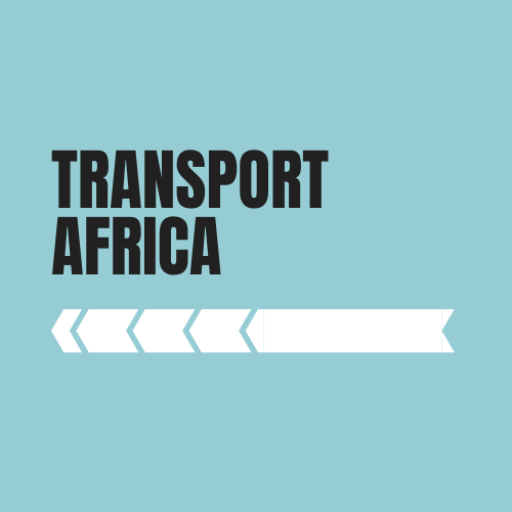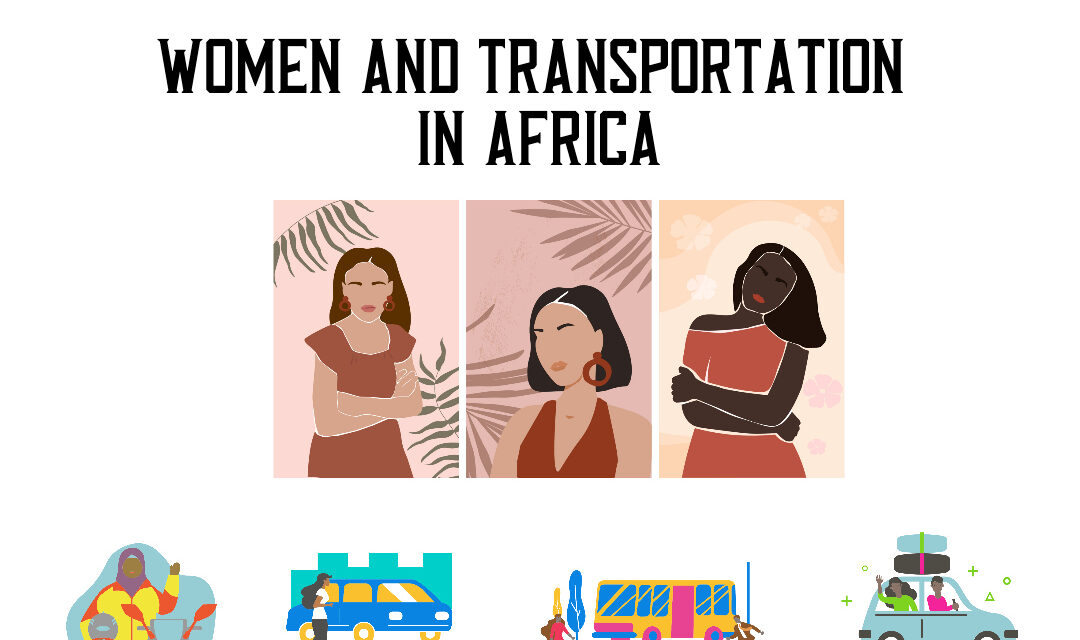Transport is an important part of daily life, and it’s one of the most common activities we engage in. It enables us to fulfill our basic needs for food, shelter and income and connects us to social services.
Transport is an important part of daily life, and it’s one of the most common activities we engage in. It enables us to fulfill our basic needs for food, shelter and income and connects us to social services. It is also a way for African women to increase their participation in the economy through informal trade or small businesses; transport makes it possible for women to access markets so they can sell their goods more easily. Transport helps reduce gender gaps in education by reducing girls’ travel time to school and allowing girls who have dropped out of school due to lack of transport or safety concerns a way back into learning environments that will allow them reach their full potentials as citizens.
In every country in Sub-Saharan Africa, men have higher rates of transport ownership and use than women.
In every country in Sub-Saharan Africa, men have higher rates of transport ownership and use than women. Women are more likely to walk, less likely to own vehicles, less likely to use motorized transport and more likely to use public transport or bicycles. The disparity between men and women’s travel patterns is particularly great for private cars; men are about twice as likely as women in urban areas (30% compared with 15%) and thrice as likely (13% compared with 4%) in rural settings.
To reduce gender inequality, we need to understand how women experience transport, who has access to what mode of transport, and why.

Bicycling used for human and goods transport (Photo from World Bank)
Gender inequality is a global problem. In many countries, women and men have different transport needs and face unequal access to transportation. Women have less access to transport than men, especially for personal use; as a result, they are unable to carry out their daily activities or travel for work or education. These issues have been identified as significant barriers for women’s empowerment. In order to reduce gender inequality in transportation systems, we need to understand how men and women experience transport differently and why these differences exist in the first place.
Women walk more than men throughout Sub-Saharan Africa, and they make up more of the pedestrian population in general.
In almost all countries in this region, women are more likely than men to walk as their main mode of transport. This is because they have a greater share of unpaid care activities such as shopping or taking children to schools than men.

People walking under a bridge in Zimbabwe (Photo from SAIIA)

Expert dugout canoeists — villagers on the Congo River use the dugout as their main means of transport on the water. (By Jonathan Blakley/NPR)
Women are less likely than men to own motorized transport.
In many parts of Africa, women are less likely than men to own motorized vehicles – women have far less access to transportation than their male counterparts throughout much of Africa.
Women are less likely than men to own motorized transport in Tanzania, Malawi and Zambia. However, in Tanzania, more than eight out of ten women can’t swim. The same holds true for Malawi (78%) and Zambia (76%). This could be a major obstacle when trying to access areas that are linked by water only (such as islands or lakeshores), which would require swimming or wading for long distances.
Lack of adequate transportation remains a major barrier to women in Sub-Saharan Africa.
Lack of adequate transportation persists as a major barrier for women in Sub-Saharan Africa. Women are often the ones who have to travel for work and school, as well as for healthcare, political reasons, etc. Therefore, African women must spend more time than men accessing transportation and go the extra distance in order to find the means to travel. Even when women have access to job opportunities, they are often unable to get there because of their limited mobility. The lack of access means that women are held back from participating in political life, which contributes to a broader cycle of inequality. Women’s low income and mobility directly affects the health and well-being of their children
This lack of mobility affects all aspects of their lives. Many women cannot earn a living because they do not have access to an income-generating opportunity that requires them to travel outside their homes (e.g., working at a market or shop). This can also impact children’s education by limiting the number of schools available within walking distance from home. In addition, it can prevent women from accessing basic health care services when needed because these services are often located far away from where people live (potentially requiring several days’ worth of walking).
Inadequate transport limits women’s access to opportunity
Women in Africa have a disproportionately difficult time getting around. Women are more likely than men to walk long distances, and spend more time accessing transportation. This means that they have less time available for important tasks like earning a living or attending school. It also means that the health and well-being of their children may suffer as they attempt to juggle all the demands on their time, which limits their ability to make healthy choices for themselves and their families.
The long distance women must travel puts them at risk for violence, including sexual violence. Violence against women is an epidemic across sub-Saharan Africa—in one study of South African adolescents ages 10–19, 43% reported being physically abused by an intimate partner at least once over the past year.

Two girls in Ghana get a ride to school. A cycle is a way of speeding up long walks (Photo by Remo Kurka/Alamy)

Woman in Nairobi Matatu (bus) sector, a male dominated industry (By Monika Krystyna )
Women must spend more time than men accessing transportation and go the extra distance in order to find the means to travel.
Women must spend more time than men accessing transportation and go the extra distance in order to find the means to travel. This is because in many African cities, women are unable to use public transportation. They have to walk longer distances, pay more for transportation (often having to pay on a per-trip basis), wait longer for transportation, and work longer hours just to make up for lost time.*
**There is no data available on how much time women lose each day due to this lack of access.
Even when women have access to job opportunities, they are often unable to get there because of their limited mobility.
Even when women have access to job opportunities, they are often unable to get there because of their limited mobility. Women in Africa are forced to take time off from work to travel and leave work early, sometimes missing out on the money that would come with their day’s wages. They must also travel in unsafe conditions, traveling at night or taking public transportation which can be unsafe for women who are traveling alone. Sometimes these journeys are uncomfortable as well; if you’re lucky enough not to get harassed or assaulted on your way home, you might arrive home late with no energy left over for anything else.
It’s important that we encourage our female friends and family members by encouraging them—and helping them—to pursue careers in areas where they will have greater freedom of movement!

Raml Tramway is the oldest tram in Africa (From Urban Transport Magazine).

Bus Rapid Transit (BRT) lane and infrastructure in Lagos-Nigeria (Photo from BBC)
Women’s low income and mobility directly affects the health and well-being of their children.
Women’s low income and mobility directly affects the health and well-being of their children. Women are less likely to have access to healthcare, and they often do not have the means to get their children to a doctor or clinic. This can be especially problematic for women in rural communities who are more likely than urban dwellers to be primary caregivers for elderly relatives or disabled family members due to poor transportation options.
The lack of access means that women are held back from participating in political life, which contributes to a broader cycle of inequality
Women’s low income and mobility directly affect the health and well-being of their children. Women play a crucial role in rural households, making up the majority of farmers and agricultural workers, but they often lack access to assets such as land or irrigation systems that would enable them to increase productivity. This is especially true for women living in countries with high rates of poverty such as Mali, where only half of men own land whereas more than 80% of women do not own any property at all (World Bank). As a result, many African governments have focused on increasing infrastructure development—including roads—to improve food security and enhance job creation through increased agricultural exports (Howard).
However, infrastructure improvements are not enough: without adequate education about how these networks can benefit them personally (e.g., better access to markets), many women remain unaware that they could use improved transportation networks to enhance their livelihoods. In addition to improving livelihoods overall by making previously inaccessible goods and services available locally or regionally, these changes would also reduce gender disparities by allowing greater participation in political life by both men and women alike
Women around the world have trouble getting around, which limits their opportunities for accessing healthcare, education, employment and public life.
Women around the world have trouble getting around, which limits their opportunities for accessing healthcare, education, employment and public life. The lack of access means that women are held back from participating in political life, which contributes to a broader cycle of inequality.
Read more for deeper understanding of Africa’s public transport. Also, check out the trends in Africa’s ever-changing public transit system.
Conclusion
For women in Sub-Saharan Africa, transportation is one of the biggest barriers to accessing opportunity. The lack of adequate transport limits women’s access to education, employment opportunities and political participation. When girls don’t have a way to get around safely and efficiently, they are often unable to reach school or complete their studies. Women with limited mobility also struggle with getting jobs outside of their communities because they have limited access to transportation. What’s more, even when women do have access to job opportunities — such as those provided by non-governmental organizations — they are unable to get there because of their limited mobility
These findings suggest that policies should take into account the particular needs of women, who are less likely to have access to transportation than men. We need to ensure that women can get where they need to go, whether it’s for work or school or just leisure activities such as visiting friends or family members.
I hope you find this article useful! If you have questions, feel free to leave a comment or contact me directly. 🙂






Thanks for another fantastic article. Where else may anyone get that type of information in such a perfect manner of…